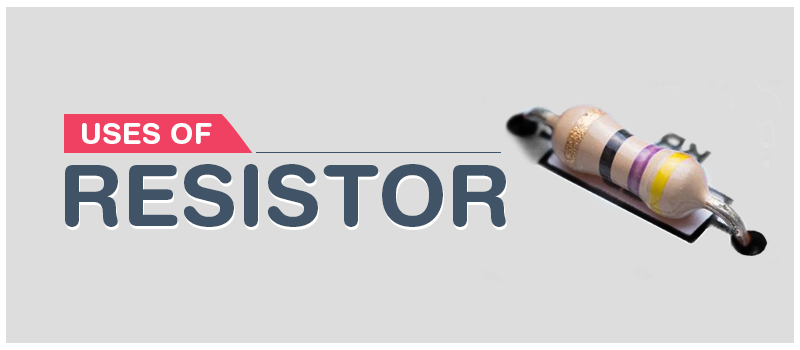
We know that one of the main uses of resistor is to control the flow of current. In a resistor, electrons have a collision with ions which slows down the flow of electricity and lowers the current and also produces heat. If a resistor is said to have high resistance then it means less current flows in it for the given voltage.
Some applications and uses of resistor are listed below:
- Circuit functions
- Dividing voltage
- Heating
- Frequency and timing
- LEDs and transistor
Resistor usage in Circuit Functions
There are various types of resistors that work according to the usage range. In that, we can set the resistance by using a knob kind of feature. Changing resistance will affect the flow of current inside the circuit. For example, this type of resistor is used in controlling the speed of a motor, pitch of a musical tone, loudness of an amplifier, etc.
Resistor is used for Diving Voltage
Dividing the voltage works when some components need to work in a much lesser voltage than the supplied input voltage. Connecting the resistors in a series will help to drop the voltage across each resistor equally, thus, assisting the appliances smoothly which works in those conditions.
It is also used for Heating
Because of the nature of generating heat when conducting current, resistors are used in a heater, toaster, microwave, electric stove, and many more heating appliances. In a light bulb, the metal filament glows white-hot due to the very high temperature produced from the resistance when electricity is passed through it.
Uses of Resistor to function in particular Timing and at a certain Frequency
Like in a light flasher, electronic sirens, blinking lights used in airplanes or tall towers which acts as a collision avoidance measure. They work on the principle of filling up current to a certain time and then discharge light, in here, the resistor decides how much current has to be passed according to the time allotted. If resistance increases, the time for discharging current in the circuit increases.
Resistors used in LEDs and Transistors
Too much current passed inside a LED or transistors can be dangerous because they are very sensitive to electric current. The use of a resistor in the circuit will help the LEDs and transistors and other types of semiconductors to function in the desired current range ideal for them.
These were some applications of Transistors. If you wish to find out more, download BYJU’S The Learning App.
RELATED ARTICLES:
| Resistors in Series and Parallel | Uses of Transistor |
Frequently Asked Questions – FAQs
What is a resistor?
A resistor is a two-terminal electrical component that provides electrical resistance. In electronic circuits, resistors are predominantly used to lower the flow of current, divide voltages, block transmission signals, and bias active elements.
What are the two types of linear resistors?
Fixed resistors and variable resistors are the two types of linear resistors.
What are the main types of fixed resistors?
Wire wound resistors, thin-film resistors, and carbon composition resistors are the main types of fixed resistors.
What are the main types of variable resistors?
Potentiometer, thermostat, and trimmer resistor are the main types of variable resistors.
What is the use of resistors in the case circuits with LEDs?
Excess current can be fatal to LEDs because they are extremely sensitive to variations in electric current. In this case, resistors can be used to control the electric current that flows through the circuit, helping LEDs and other semiconductors to work at the ideal current ranges.

Comments